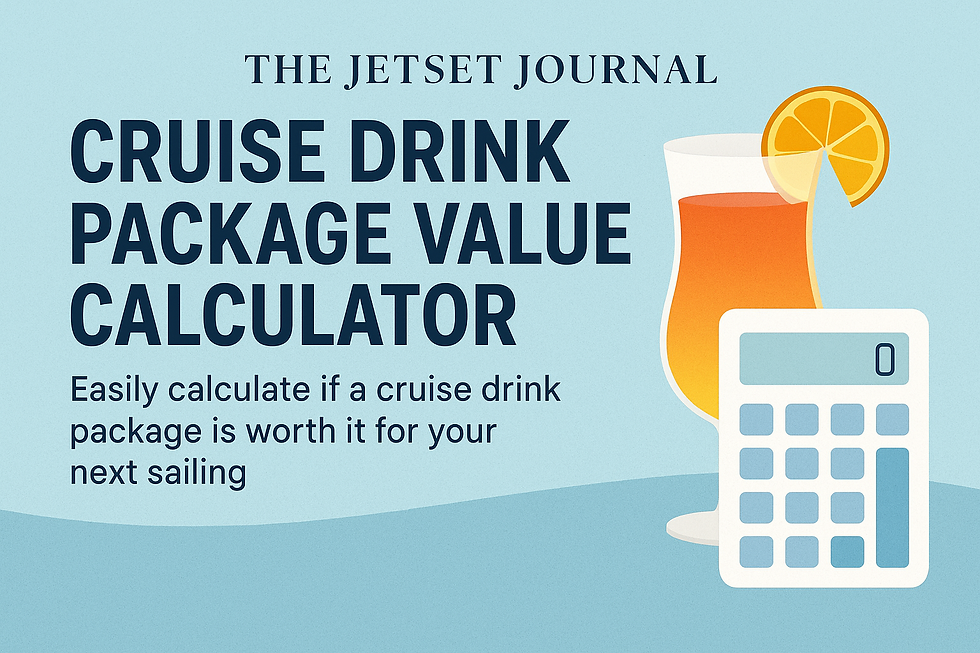Unified Ban List for Cruise Lines: Pros, Cons, and What It Means for Passenger Safety
- Jetsetter

- May 5
- 3 min read

Cruising has long been synonymous with relaxation, adventure, and luxury—but a recent surge in onboard violence has shaken travelers’ confidence. From epic brawls in the ship’s atrium to isolated assaults in cabin hallways, incidents seem to jump from one vessel to the next. Now, the idea of a unified ban list—where all major cruise lines share names of troublemakers—has emerged as a potential game‑changer. But what would this mean for the cruising experience? Let’s dive in.
The Catalyst: Recent Outbursts at Sea
Royal Caribbean’s Oasis of the Seas (April 2025): A late‑night brawl involving two dozen passengers spilled into public areas, leading to multiple hospitalizations and a temporarily locked‑down deck.
Carnival Vista (March 2025): A passenger allegedly assaulted a crew member after an argument over shore‑excursion delays, prompting an on‑board detainment until authorities met the ship in Cozumel.
Norwegian Bliss (January 2025): A heated dispute over seating at a jazz performance escalated into a physical altercation, forcing the ship to reroute for an unscheduled disembarkation.
These high-profile skirmishes aren’t isolated. Social media is rife with videos of aggressive behavior, and passenger surveys reveal growing anxiety about safety on “floating cities.”
How a Unified Ban List Could Impact Cruising
Enhanced Passenger Safety:
With shared offender data, perpetrators banned by one line would find it difficult to book on another, reducing repeat offenses.
A collective database may deter would‑be troublemakers who realize they’re blacklisted industry‑wide.
Streamlined Booking & Check‑In:
Cruise agencies and aggregators could cross‑reference a single list to flag high‑risk individuals before issuing tickets.
On‑board security checks become more efficient, with fewer “blind spots” between different companies’ systems.
Industry Reputation Management:
Demonstrating proactive, unified action reassures customers and investors concerned about negative headlines.
Lines that champion this initiative may gain a competitive edge as the “safest” choice.
Pros of a Unified Ban List
Deterrence Factor: Knowing that erratic behavior across one line leads to industry‑wide consequences could curb aggression before it starts.
Cost Savings: Shared resources for managing ban records reduce duplication of effort, potentially lowering security budgets.
Data‑Driven Enforcement: Aggregated incident reports help identify patterns—timeframes, ship types, or itineraries most prone to trouble—so lines can tailor prevention strategies.
Solidarity and Trust: A united front signals to passengers that the industry takes complaints seriously, rebuilding confidence eroded by recent events.
Cons of a Unified Ban List
Privacy & Legal Concerns: How long should a name stay on the list? What about false accusations or resolved disputes? Airlines have faced lawsuits over wrongful blacklisting—cruise lines must tread carefully.
Data Security: A central database becomes a high‑value target for hackers. A breach could expose personal details of thousands of travelers.
Operational Complexity: Smaller or niche lines may lack the infrastructure to integrate with a unified system, creating potential loopholes.
Disparate Policies: What constitutes “ban‑worthy” behavior varies by line. Reaching consensus on thresholds—fighting, harassment, intoxication—could be contentious.
Are Cruise Lines Talking About Merging Ban Lists?
Industry insiders report quiet discussions among major players:
Carnival Corporation & Royal Caribbean Group: Rumored to be piloting a shared “watchlist” API that flags banned patrons during online check‑in.
MSC Cruises: Exploring partnerships with third‑party security firms for an aggregated misconduct database.
Norwegian Cruise Line Holdings: Expressed interest in cross‑industry data standards but remains cautious about liability.
Though no official announcements have been made, the rapid-fire nature of onboard incidents has accelerated talks. A pilot program could launch as early as late 2025, with full roll‑out contingent on regulatory approvals and legal frameworks.
What This Means for You, the Traveler
Book With Confidence: Once implemented, a unified ban list promises safer voyages and fewer disruptions.
Mind Your Behavior: Simple steps—respect quiet hours, follow crew instructions, drink responsibly—go a long way toward keeping your name off any list.
Stay Informed: Watch for updates from your cruise line about revised conduct policies. Companies may begin notifying guests of the joint ban list in booking confirmations.
Join the Conversation
Is a unified ban list the key to safer seas, or does it raise more questions than it answers? We want to hear your thoughts:
Have you witnessed or experienced violence on a cruise? Would a shared ban list make you feel more secure? Share your story in the comments below!
At The Jetset Journal, we believe informed travelers make the best adventurers. Let’s shape the future of cruising—together.






Comments